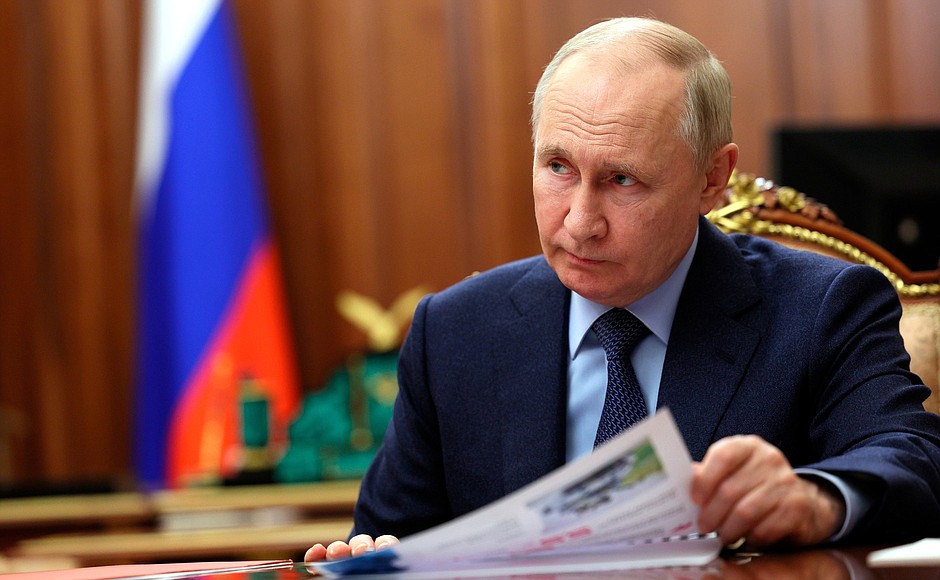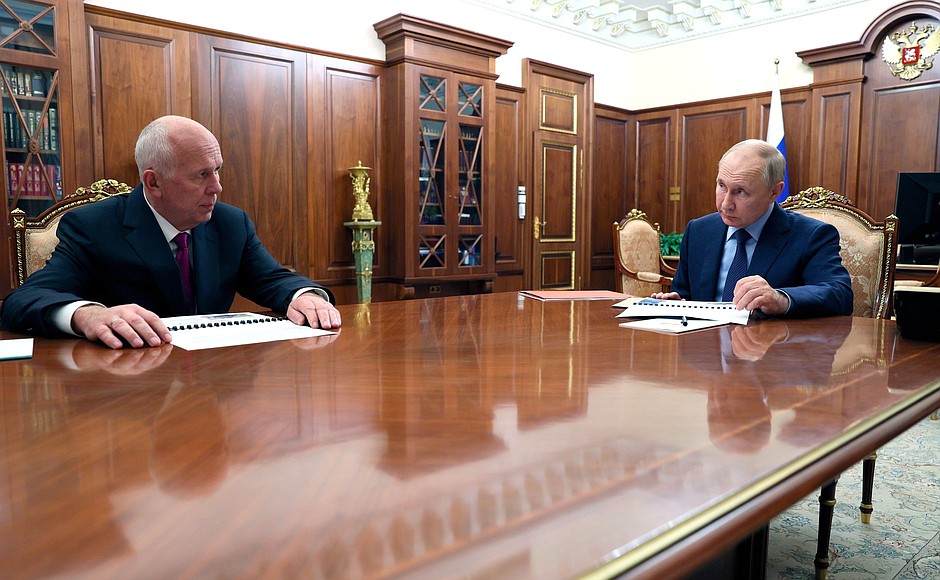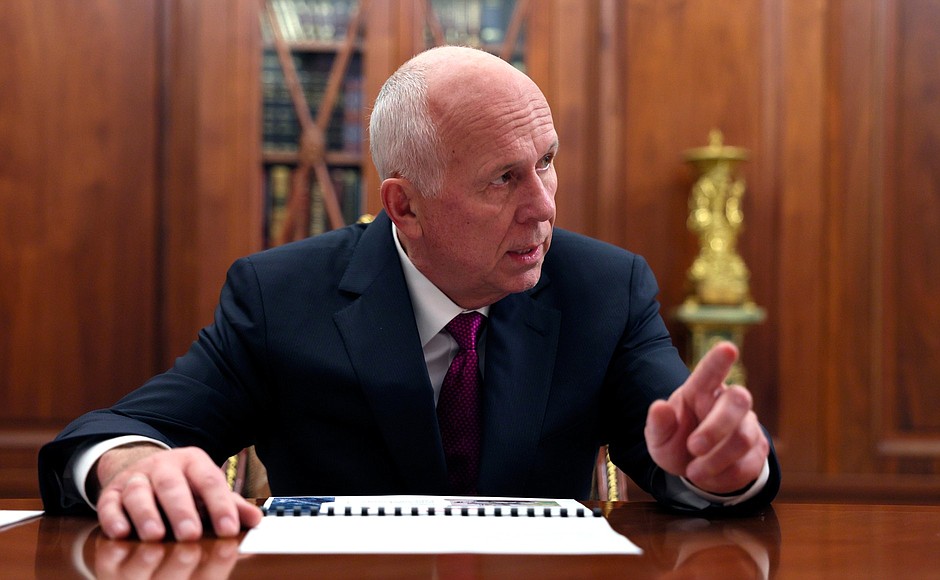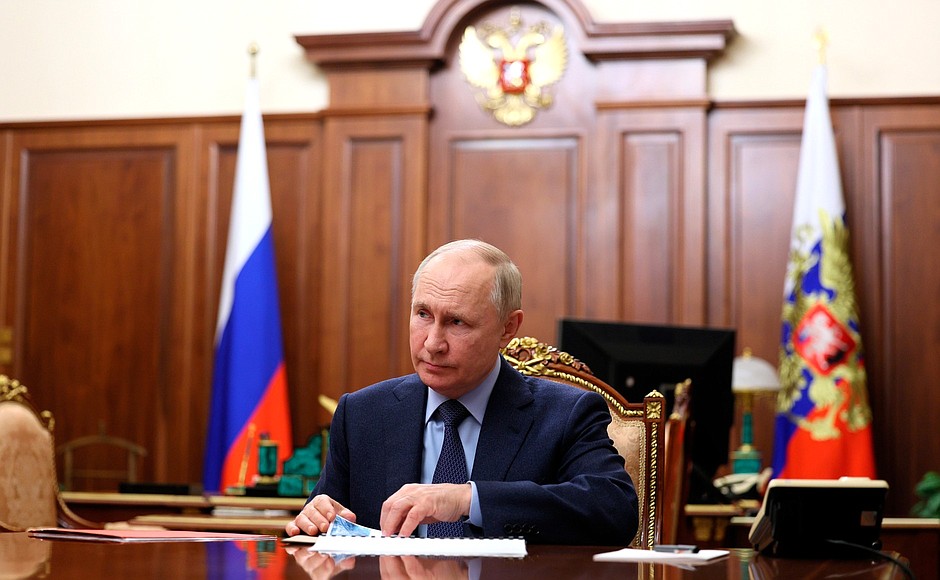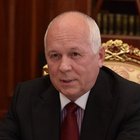President of Russia Vladimir Putin: Mr Chemezov, let’s begin with state defence procurement.
Rostec State Corporation CEO Sergei Chemezov: Yes, I would like to note briefly that Rostec continues to be part of achieving national goals to provide for our state’s technological sovereignty.
Of course, the implementation of the state defence order remains our priority. Artillery weapons, armoured vehicles, tanks, combat aircraft, firearms, drones, munitions, and other equipment are regularly being sent to the Army. Honestly, if we had not conducted a deep modernisation of our enterprises before 2022, we would not have been able to increase production several-fold, as we did last year and this year.
I can give you a good example: we boosted the production of munitions for firearms and MLRS by 50 times.
Vladimir Putin: And for cannon-launched artillery.
Sergei Chemezov: Cannon-launched artillery and MLRS.
We increased the output of light armored vehicles and equipment by 5.5 times and tanks by 7 times. So, this is a major increase.
Nevertheless, despite the special military operation, we have not forgotten about civilian equipment. Our main civilian projects are first, civilian aircraft. We pay a great deal of attention to this. In accordance with the programme that you emdorsed, we must produce over 500 aircraft of various types before 2030, including 270 MS-21 airliners, 142 Superjet-100 planes and 115 Tu-214s.
We currently have 18 MS-21 aircraft in various stages of completion; in 2024, we will establish serial production and transfer six planes to Aeroflot. We need to increase output gradually, and by 2029 manufacture up to 72 planes a year.
As for the Supejet-100…
Vladimir Putin: What about the engine?
Sergei Chemezov: It is the PD-8. It is already complete, the table inspections are finished, testing in a testbed aircraft complete, and soon we will begin certification flights, with the engine installed on the plane. We need to transfer 20 of them in 2024 to the airlines, and we will manufacture 20 of these planes per year.
As for engine manufacturing, I mentioned the PD-8. In 2024, plans call for receiving certification for the VK-650V engine. This is a helicopter engine; it will be installed on the Ansat and the Ka-226. They are currently equipped with foreign-made engines, but in 2024 we will complete testing and receive certification, I believe.
Generally speaking, many countries build aircraft, but only five manufacture engines, the United States, Canada, Great Britain, France and Russia. To give you an example, it took Pratt & Whitney, an American company, 15 years to build an engine for the Airbus 320. We started designing our PD-8 in 2017 and completed it in 2023, that is, in six years. Probably, no one has ever accomplished this in such a record-breaking short time. We owe this success to our scientists, engineers and designers.
The St Petersburg-based ODK-Klimov has built a state-of-the-art design and manufacturing facility for the production of engines and turbines. We have already started production of the VK2500 and the TV3117 engines that are installed on Mi-17, Mi-8, Mi-171 helicopters and Ka-62 and Ka-52 military helicopters.
With regard to helicopter manufacturing, I mentioned Ansat earlier. In 2024, as soon as we get the new VK650 engine, we will increase its range from 500 kilometres to 660 kilometres, and with an extra fuel tank, the range will increase up to 800 kilometres. We are replacing all imported parts and components.
Vladimir Putin: Up to 800 kilometres?
Sergei Chemezov: Up to 800 kilometres with the extra tank. This is Ansat.
The engines are good and efficient, in general. The range will be up 660 kilometres without the extra tank.
Vladimir Putin: What about the speed?
Sergei Chemezov: They have a cruising speed of 250 km/h to 280 km/h.
In 2024, we will complete the second phase of certification of what is known as an offshore helicopter. We built it to the order of Rosneft. The helicopter will be used to service offshore platforms. Besides that, it can land and make emergency landings as necessary. It can land on water with a rubber pontoon ring inflating around it. It can land on sand as well. We took it to the Abu Dhabi show, and it got a lot of attention. The Malaysians have shown interest in it as well. They want to buy it, and so do the Arab countries.
We are going to use the Mi-171A3 to certify a passenger and a search and rescue helicopter.
With regard to the automotive industry, our companies are widely engaged in developing electric vehicles (EVs).
Vladimir Putin: And self-driving vehicles.
Sergei Chemezov: Self-driving vehicles, too.
Vladimir Putin: KAMAZ has outdone its competitors.
Sergei Chemezov: True, six KAMAZ lorries now operate on the Moscow-St Petersburg Motorway. In 2024, there will be 18 KAMAZ lorries running on that route.
In 2024, we will launch a similar autonomous quarry-type lorry. It is a huge dump lorry without a cab that will carry rock, rock mass, and the like without a driver.
I mentioned that KAMAZ makes electric buses; there are already 1,100 of them in Moscow. This year, we signed a contract for another 1,000, also for Moscow. We have sent buses to Volgograd, Kursk and Lipetsk. Now contracts with Rostov and Taganrog are underway. To sum up, the number of cities using electric buses is continuously growing. There is a demand for them.
KAMAZ has also made an electric car, but a small one. It is called the Atom. We are developing production of the Atom EV at the former Renault plant here in Moscow. I think we will be ready to sell these cars in 2025. The prototype will be finished in 2024, and we will start serial production on the assembly line in 2025.
Our company, Radio-Electronic Technologies, is producing electric charging stations. We have already set up over 200 of them.
Vladimir Putin: You should also establish gas stations.
Sergei Chemezov: We are building those as well.
Vladimir Putin: You are?
Sergei Chemezov: Yes, of course. We also make gas engines at KAMAZ.
Vladimir Putin: No, no, I’m talking about fueling stations.
Sergei Chemezov: We are building gas fueling stations. This is for liquefied natural gas. At one exhibition, we presented a mobile fueling station for gas, for LNG.
Vladimir Putin: Do you make medical equipment as well?
Sergei Chemezov: Medical equipment, yes.
Regarding import substitution, I would like to say a few words about KAMAZ. As soon as Mercedes left…
Vladimir Putin: Did you manage to overcome this situation?
Sergei Chemezov: In one year, we replaced 2,300 components that we learned to manufacture ourselves. Now the lorry designed with the Germans, the K5, is about 75–80 percent domestic content. Next year we will replace all the foreign components, 100 percent. We didn’t just replace them, but even improved some of the specifications of this car. Our engine is more economical – about 22 litres per 100 kilometres instead of 25–27 litres before. It is also quieter. The service intervals are longer, too: 150,000 kilometres instead of 120,000 kilometres before. This development matches that of how our main competitors, Mercedes and Volvo, produce their own vehicles.
As for medicine and medical instrument-making, we have registered 150 different items of medical equipment with Rosdravnadzor (Federal Service for Monitoring Healthcare). This equipment is produced, in part, by our companies – Shvabe Holding, Ruselectronics and Concern Radio-Electronic Technologies.
Our CRET – Concern Radio-Electronic Technologies – was known for its lung ventilators during the Covid pandemic. Today, we have designed, together with emergency doctors, a mobile intensive care unit that is convenient for doctors and comfortable for patients. These units are much in demand today. We are already selling them.
Vladimir Putin: Well done.
<…>
